Call for Abstract
Scientific Program
22nd International Conference on Industrial Chemistry and Aqua Technology, will be organized around the theme “Emerging Water Technologies & Chemical Science Evolution”
Industrialchemistry 2021 is comprised of 16 tracks and 7 sessions designed to offer comprehensive sessions that address current issues in Industrialchemistry 2021.
Submit your abstract to any of the mentioned tracks. All related abstracts are accepted.
Register now for the conference by choosing an appropriate package suitable to you.
Industrial chemistry continues with the progress in science and technology. It incorporates other arise disciplines such as biotechnology, microelectronics, and pharmacology and material science. It deals with physical and chemical processes towards the transformation of raw materials into products that are of useful to humanity. Chemicals or commodity chemicals are a broad chemical category including polymers, bulk petrochemicals and intermediates, other derivatives and basic industrials, inorganic chemicals, and fertilizers. Major industrial customers include rubber and plastic products, textiles, apparel, petroleum refining, pulp and paper, and primary metals.
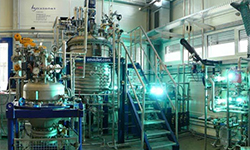
- Track 1-1Super alloy and Metal foam
- Track 1-2Organic Chemistry
- Track 1-3Chemical Technology
- Track 1-4Fibres and Plastics
Inorganic chemistry is the study of the structures, properties, and behaviours of all chemical compounds, except the myriad organic compounds and behaviour of inorganic and organometallic compounds. It is the study of the formation, synthesis and properties of chemical substances that do not having C-H bonds. Inorganic chemistry is related to other areas like materials sciences, mineralogy, thermodynamics, physical chemistry, spectroscopy, earth sciences and crystallography.
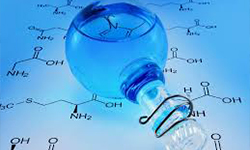
- Track 2-1Geochemistry
- Track 2-2Organometallic Compounds
- Track 2-3Fibres and Plastics
- Track 2-4Element Denotation
Medicinal chemistry in its most common practice on small organic molecules encompasses synthetic organic chemistry, aspects of natural products and computational chemistry in close combination with chemical biology, enzymology and structural biology, together aiming at the discovery and development of new therapeutic agents.Medicinal chemistry is focused on drug design, chemical synthesis and deals with the design, optimization and development of chemical compounds for use as drugs.
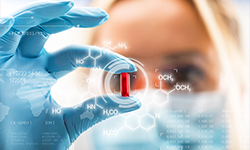
- Track 3-1Drug resistance by misuse of Medications
- Track 3-2Artenisinin: A traditional medicine block bust
- Track 3-3Naturopathy and Acupuncture as a secondary medical system
Analytical chemistry consists of classical, wet chemical methods and modern, instrumental methods. Classical qualitative methods use separations such as precipitation, extraction, and distillation. It is also focused on improvements in experimental design, chemo-metrics, and the creation of new measurement tools. Analytical chemistry plays an increasingly important role in the pharmaceutical industry. All chemical manufacturing produces waste products in addition to the desired substances, and waste disposal has not always been carried out carefully. The techniques of analytical chemistry are relied on heavily to maintain a benign environment.
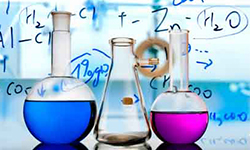
- Track 4-1Qualitative and Quantitative analysis
- Track 4-2Gravimeter Analysis
- Track 4-3Differential Scanning Calorimetry
- Track 4-4Drug Resistance
Organometallic chemistry combines aspects of inorganic chemistry and organic chemistry. It is the study of compounds containing metal-element bonds that are largely covalent in character. Organometallic chemistry deals with the chemical compounds containing bonds between carbon and metal atoms. Metal-organic frameworks (MOFs) are materials in which metal-to-organic ligand interactions yield porous coordination networks with record-setting surface areas surpassing activated carbons and zeolites. De-localization of orbitals within the complex substances form conjugated systems of materials which lead to the derivation of chromophores used in synthetic processes. Diamond and carbon materials are widely used in the applications of organic synthesis from novel materials. Organometallic chemistry is the study of chemical compounds containing bonds between carbon and metal atoms.

- Track 5-1Transmetalation
- Track 5-2Organometallic substitution reaction
- Track 5-3Carbon-Hydrogen bond activation
- Track 5-4Cyclometalation
Photochemistry is the branch of chemistry concerned with the chemical effects of light. Synthesize photo stable compounds that are capable of converting absorbed light into heat with a high degree of efficiency. Industrial applications of photochemistry have so far been in the fields of freeâ€radical chlorination, sulfochlorination, sulfoxidation, and nitrosation. Photochemical reactions are being utilized on an increasing scale for the synthesis of vitamins, drugs, and fragrances.

- Track 6-1Luminescence
- Track 6-2Grotthuss–Draper law and Stark-Einstein law
- Track 6-3Fluorescence and phosphorescence
- Track 6-4Organic Photo chemistry
- Track 6-5Inorganic and Organometallic Photo chemistry
Ultra-pure water contains by definition only H20, and H+ and OH- ions in equilibrium. Therefore, ultrapure water conductivity is about 0,054 us/cm at 25oC, also expressed as resistivity of 18, 3 MOhm. Ultrapure water production often has to be done in 2 steps. For example, from tap water or fresh groundwater, the water should first be demineralized by membrane filtration or ion exchange to reach the ultimate conductivity of 10 us/cm. The demineralized water is then processed through a high performance Mixed Bed or by Electrodionisation. Ultra-pure water is mainly used in the semiconductor and pharmaceutical industry.
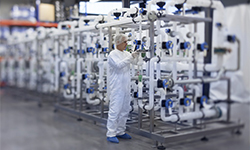
- Track 7-1Membrane filtration
- Track 7-2Electrodionisation
- Track 7-3Microfiltration
- Track 7-4Membrane elements
- Track 7-5Applications in Pharmaceutical and Biotechnology Companies
White Biotechnology can be regarded as Applied Bio catalysis, with enzymes and microorganisms, aiming at industrial production from bulk and fine chemicals to food and animal feed additives. White Biotechnology supports new applications of chemicals produced via biotechnology. The use of plant-based resources is one of the foundations of the concept of “green chemistry”. Many green chemistry processes make use of white biotechnology tools, and light will be shed on the importance of this technological synergy within the context of industry and factories in the future. In fact, biotechnology is a way of using biomass or its waste material renewably to produce molecules with high added value for different applications, ranging from pharmaceuticals, agro-food, and cosmetics to plastics, materials and energy.

- Track 8-1Bio catalysis
- Track 8-2Waste minimization
- Track 8-3Use of renewable resources or agro Industrial residues
- Track 8-4Renewable feedstock Optimization
- Track 8-5New high performance microorganisms
- Track 8-6Spiro connected heterocycles
Petroleum geology is the study of origin, natural occurrence, movement, gathering and exploration of hydrocarbon fuels, especially oil or petroleum. Petroleum geology is a branch of stratigraphy that deals with the relationship between rock layers and the way they can move or shift. The movement of rock layers can affect the site of petroleum deposits, well as the removal of the petroleum. The major disciplines of include Source rock analysis, Basin analysis, exploration stage, Appraisal Stage, Production stage, Reservoir Analysis. Petroleum geologists study and explore the oil deposits and oil production. There are a variety of different processing methods used to convert resins into finished products. Some include: Extrusion Profile and Sheet extrusion, Pipe extrusion, Cast film extrusion, Blown film extrusion.
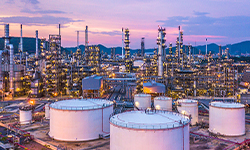
- Track 9-1Olefins and aromatics
- Track 9-2Monomer vs. Polymer
- Track 9-3Fluid catalytic cracking
- Track 9-4Plasticization of polymers with supercritical fluids
Solid state physics is the study of rigid matter or solids, through methods such as quantum mechanics, crystallography and electromagnetism. It is the largest division of condensed matter physics. Solid-state physics studies how the large-scale properties of solid materials result from their atomic-scale properties. Thus, solid-state physics forms a theoretic basis of materials science.
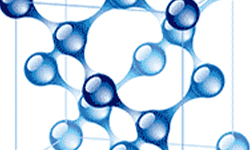
- Track 10-1Quantum mechanics
- Track 10-2Electromagnetism
- Track 10-3Metallurgy
Polymeric biomolecules or biopolymers are polymers fabricated by living organisms. Polynucleotides, Nucleotides and Polypeptides are the three main classes of polymers those are called long polymers. It also have short polymer of amino acids and polysaccharides which are frequently linear bonded polymeric carbohydrate structure for example examples: rubber, melanin and lignin. The difference between biopolymer and synthetic polymer can be found in their structure .compare to biopolymer synthetic polymer has much simplest structure. This fact shows to a molecular mass distribution that is missing in biopolymers. All biopolymers are alike that they all contain the similar sequences and numbers of monomers and thus all have the same mass.

- Track 11-1Biodegradable Plastics
- Track 11-2Recycled Plastics
- Track 11-3Micro and Nano Blends Based on Natural Polymers
- Track 11-4Smart biomaterials
- Track 11-5Biomacromolecules and Biopolymers
The method by which a drug is delivered can have a significant effect on its efficacy. To minimize drug degradation and loss, to prevent harmful side-effects and to increase drug bioavailability and the fraction of the drug accumulated in the required zone, various drug delivery and drug targeting systems are currently under development. Attempts are being made to develop therapeutic proteins for cancer, hepatitis, and autoimmune conditions, but their clinical applications are limited, except in the cases of drugs based on erythropoietin, granulocyte colony-stimulating factor, interferon-alpha, and antibodies, owing to problems with fundamental technologies for protein drug discovery. Technologies profiled include those used for biomarker and target discovery such as high throughput screening, signal transduction, micro array, RNAi, metabolomics, toxicogenomics, biosensors and nanotechnology.
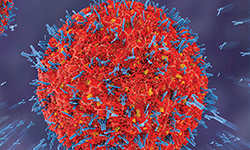
- Track 12-1Choosing Disease and Drug Target
- Track 12-2Identification of Pharmacophore
- Track 12-3Lead Compounds and SAR
- Track 12-4High throughput screening
- Track 12-5Computer-aided drug design
The most promising and well-developed environmental applications of nanotechnology has been in water remediation and treatment where different nanomaterials can help purify water through different mechanisms including adsorption of heavy metals and other pollutants, removal and inactivation of pathogens and transformation of toxic materials into less toxic compounds. It highlights the uses of nanotechnology to purify water, including separation and reactive media for water filtration, as well as nanomaterial’s and nanoparticles for use in water bioremediation and disinfection. The most extensively studied nanomaterial; zero-valent metal nanoparticles (Ag, Fe, and Zn), metal oxide nanoparticles (TiO2, ZnO, and iron oxides), carbon nanotubes (CNTs), and nanocomposites.
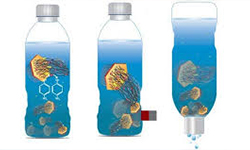
- Track 13-1Zero-Valent Metal Nanoparticles
- Track 13-2Metal Oxides Nanoparticles
- Track 13-3Adsorption & Separation
- Track 13-4Antibacterial activity
- Track 13-5Photocatalysis
- Track 13-6Dendrimer
Water desalination processes separate dissolved salts and other minerals from water. Seawater desalination has the potential to reliably produce enough potable water to support large populations located near the coast. The most common desalination methods employ reverse-osmosis in which salt water is forced through a membrane that allows water molecules to pass but blocks the molecules of salt and other minerals. Thermal desalination uses heat, often waste heat from plants or refineries, to evaporate and condense water to purify it. The cost is very high and so it cannot be afforded by everyone who needs it, but because the desalinisation technology is improving fast, so the costs are beginning to fall, making it more affordable to countries and islands that need it. Desalination techniques are also being developed on a much smaller scale. Portable desalination kits are a prime example. Desalination is becoming more economically viable as the technology improves. Desalination plants can be provided in a wide range of outputs to cater for small isolated communities or to contribute substantially to water supplies for large cities and even for irrigation.
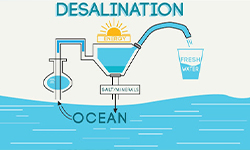
- Track 14-1Vacuum distillation
- Track 14-2Multi-stage flash distillation
- Track 14-3Multiple-effect distillation
- Track 14-4Reverse osmosis and Nanofiltration:Leading Pressure driven membrane processes
- Track 14-5Electrodialysis and Electrodialysis Reversal
Graphene is a thin layer of pure carbon; it is a single, tightly packed layer of carbon atoms that are bonded together in a hexagonal honeycomb lattice. In more complex terms, it is an allotrope of carbon in the structure of a plane of sp2 bonded atoms with a molecule bond length of 0.142 nanometres. Layers of graphene stacked on top of each other form graphite, with inter planar spacing of 0.335 nanometres. Furthermore, the quality of the graphene that was separated by using this method was sufficiently high enough to create molecular electronic devices successfully. While this research is very highly regarded, the quality of the graphene produced will still be the limiting factor in technological applications. Once graphene can be produced on very thin pieces of metal or other arbitrary surfaces (of tens of nanometres thick) using chemical vapour disposition at low temperatures and then separated in a way that can control such impurities as ripples, doping levels and domain size whilst also controlling the number and relative crystallographic orientation of the graphene layers, then we will start to see graphene become more widely utilized as production techniques become more simplified and cost-effective.
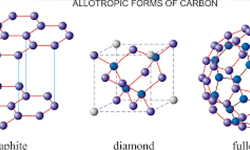
- Track 15-1Formation of minerals to molecular interactions
- Track 15-2Biomedicaland Sensors
- Track 15-3Nonlinear Kerr effect
- Track 15-4Mechanical exfoliation
- Track 15-5Neodymium magnets
Polymer science is an interdisciplinary area comprised of chemical, physical, engineering, processing and theoretical aspects. It also has enormous impact on contemporary materials science. Its goal is to provide the basis for the creation and characterization of polymeric materials and an understanding for structure/property relationships. Polymer science is of increasing importance for everyone's daily life. Many modern functional materials, gears, and devices have polymers as integral parts. Not surprisingly, roughly 30% of all scientists in the chemical industry work in the field of polymers.
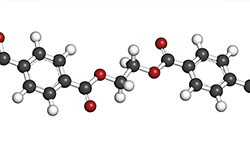
- Track 16-1Condensation Polymerization or Step-Growth Polymerization
- Track 16-2Polymer Rheology and Polymer Morphology
- Track 16-3Conducting Polymers
- Track 16-4Rubbers - Materials and Processing Technology
- Track 16-5Gasification
- Track 16-6Hydrogels and Stimulable Polymer Formulations
- Track 16-7Structure and Rheological Properties of Complex Fluids
